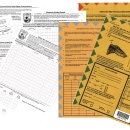
The U.S. Fish and Wildlife Service, working with partners, annually assesses the population status and harvest of four populations of Sandhill cranes: the Mid-continent, Rocky Mountain, Lower Colorado River, and Eastern populations. The annual indices to abundance of the Mid-Continent Population (MCP) of sandhill cranes had been relatively stable from 1982 to the mid-2000s. Some of the annual indices have increased in recent years, and are more variable interannually compared to historic values. The spring 2020 survey for the MCP in the Central Platte River Valley (CPRV), Nebraska, was not conducted due to travel restrictions and other complications caused by the 2019 coronavirus disease (COVID-19) pandemic. Data from the most recent three years of surveys (2017-19) was 839,992, which is well above the established population-objective range of 350,000-475,000 cranes. All Central Flyway States, except Nebraska, allowed crane hunting in portions of their States during 2019-20. Estimates of harvest and hunter activity could not be generated for Oklahoma this year due to a lack of information for that state. An estimated 12,804 Central Flyway hunters (exclusive of Oklahoma) participated in these seasons. This estimate was 8% higher than the number that participated in the previous season for the same states. Hunters harvested 34,195 MCP cranes in the U.S. portion of the Central Flyway during the 2019-20 seasons, which was a record high. The longterm (1982-2017) trends for the MCP indicate that harvest has been increasing at a higher rate than population growth. The fall 2019 pre-migration survey for the Rocky Mountain Population (RMP) resulted in a count of 21,290 cranes, 2% lower than the count from 2018. The 3-year average was 20,894 sandhill cranes, which is within the established population objective of 17,000-21,000 for the RMP. Hunting seasons during 2019-20 in portions of Arizona, Idaho, Montana, New Mexico, Utah, and Wyoming resulted in a harvest of 1,110 RMP cranes, a 27% decrease from the previous year’s harvest. The Lower Colorado River Valley Population (LCRVP) survey results indicated essentially no change in abundance from 2019 (2,922 birds) to 2020 (2,941 birds). The 3-year average is 2,753 LCRVP cranes, which is slightly above the population objective of 2,500 birds. The Eastern Population (EP) sandhill crane fall survey index for 2019 (89,513) was an 8.4% decrease from the previous year, and still well above the objective of 30,000 cranes for this population. A total of 1,133 cranes were harvested in Alabama, Kentucky, and Tennessee during the 2019-20 seasons.


